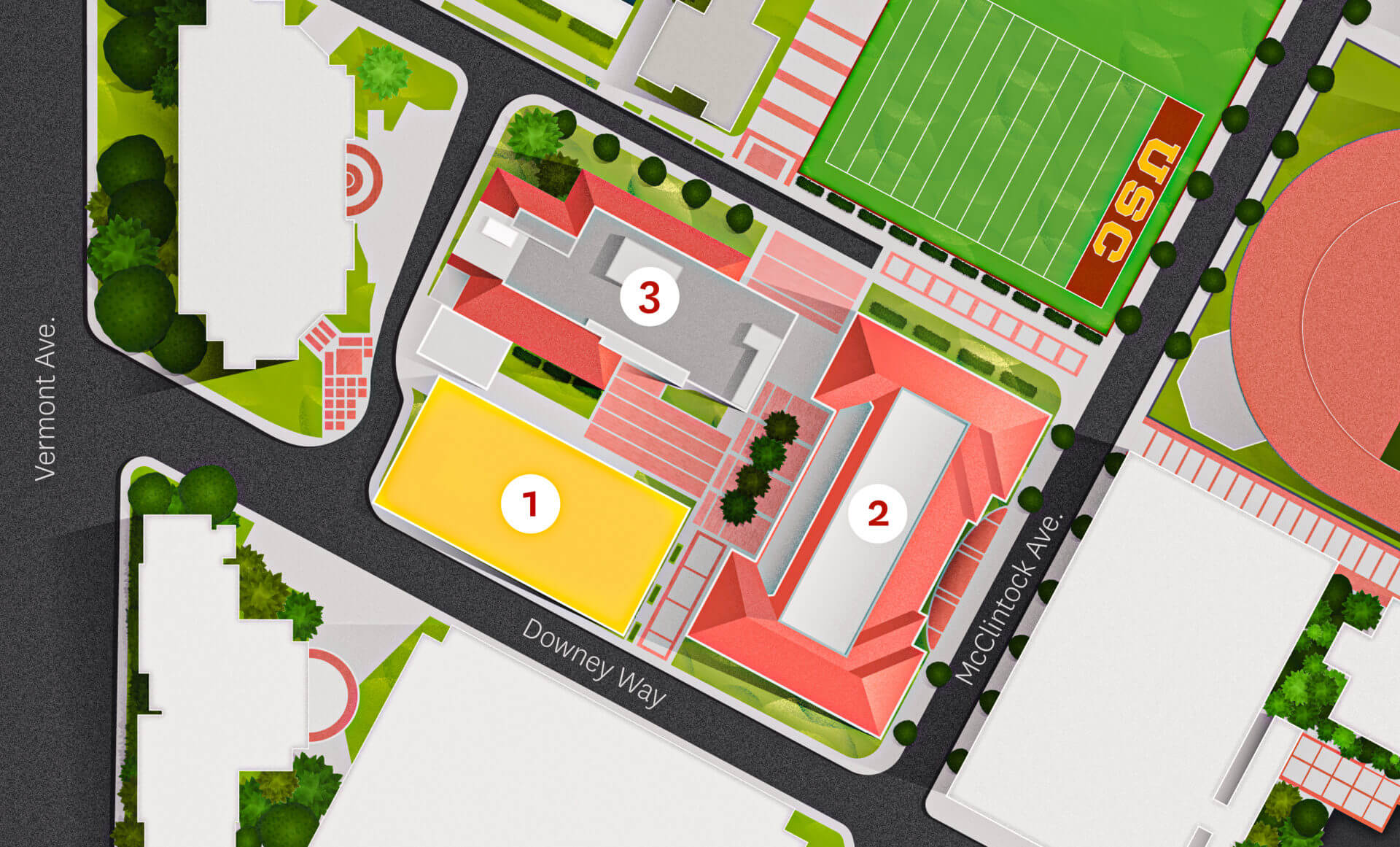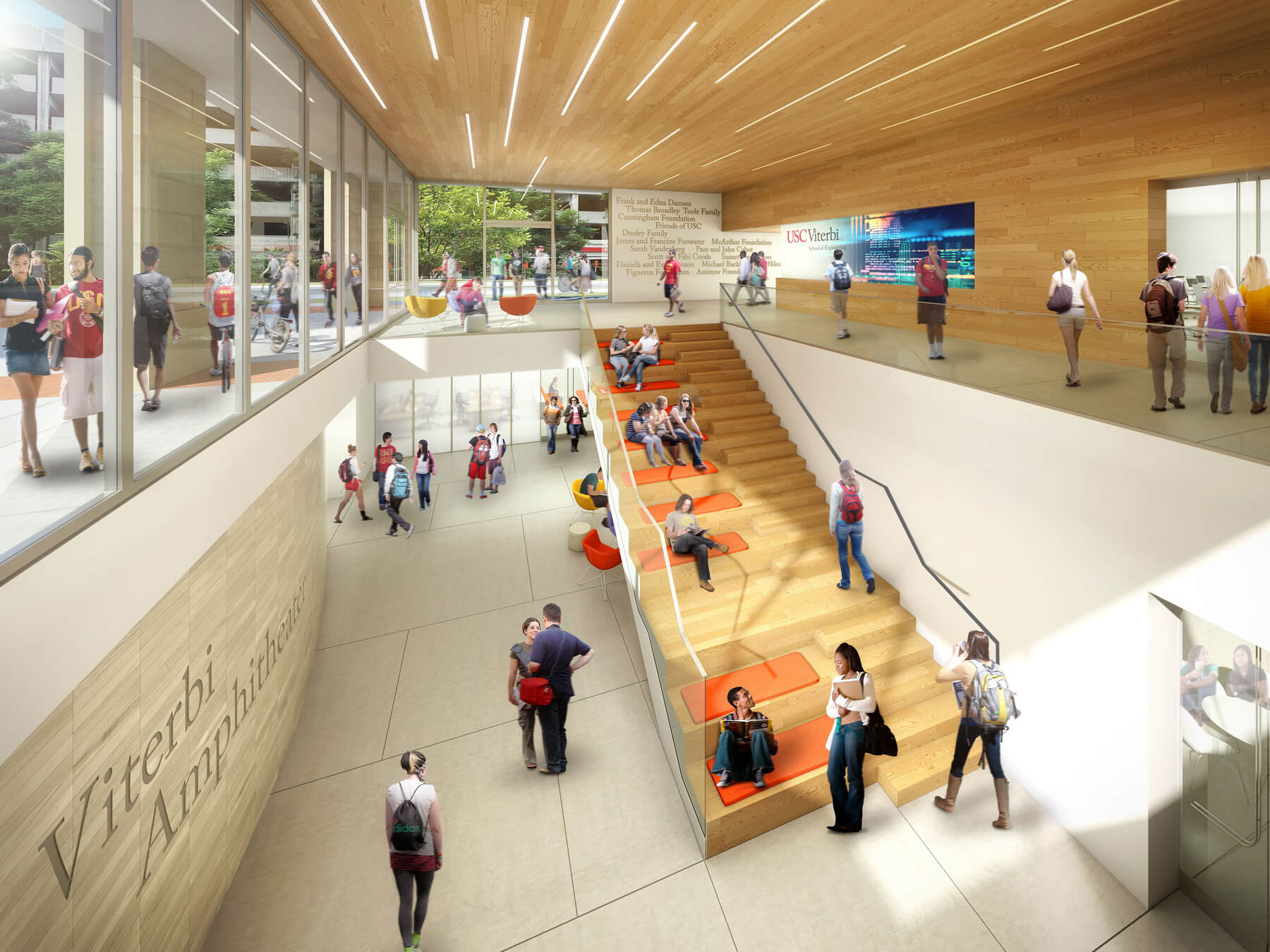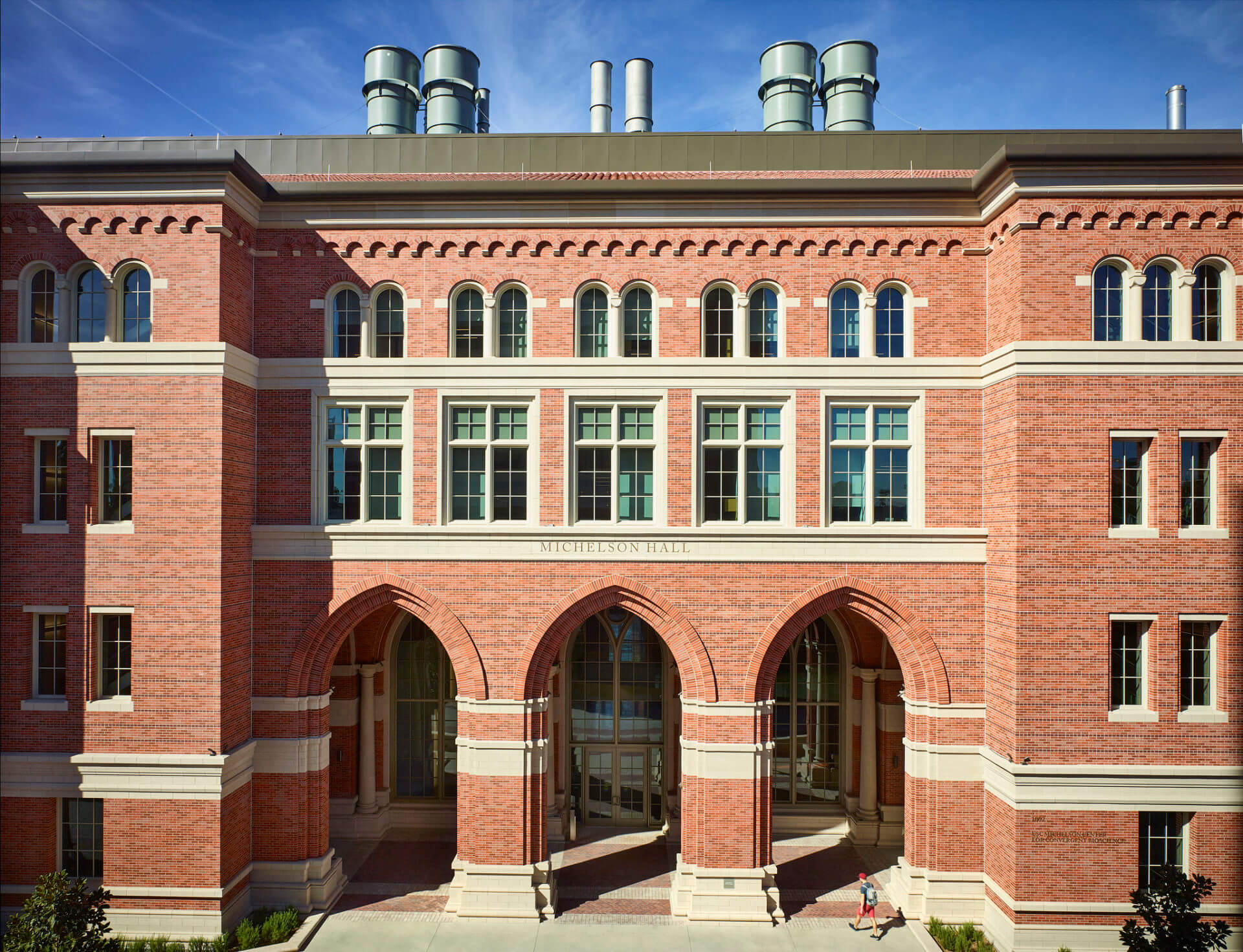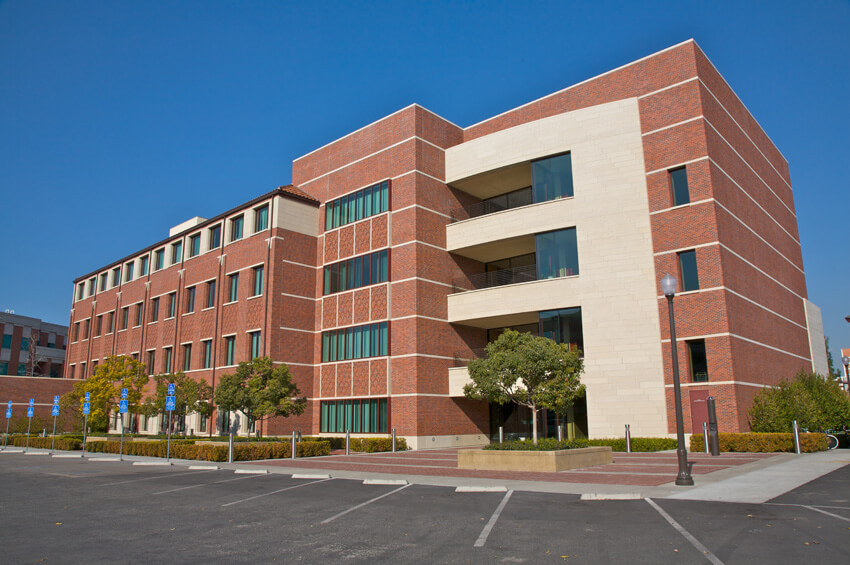First Look: A New Home for Computer Science
USC researchers soon will be able to discuss medical breakthroughs with engineers and computer scientists at a new “convergence plaza” — a unique global example of visionary thinking and aspiration on USC’s University Park Campus. The final piece of this concept will become reality thanks to Dr. Allen and Charlotte Ginsburg, whose generous gift will help build a state-of-the-art home for computer science.
The Dr. Allen and Charlotte Ginsburg Human-Centered Computation Building, announced in January 2020, will be adjacent to the Michelson Center for Convergent Bioscience and the Ray Irani Hall for Biological Sciences. This powerful trifecta will reflect increasing connections between computing and medicine, health tech and biology, and bring great minds from disciplines all over campus under one roof to solve the world’s most pressing health problems.
Research and teaching in the building will focus on advancing computer science’s role in improving and benefiting society through areas including artificial intelligence, machine learning and robotics.
Convergence Plaza: A Powerful Trifecta
for details Click here
for details Click here
for details


The Dr. Allen and Charlotte Ginsburg Human-Centered Computation Building
The 98,000-square-foot structure will house the USC Viterbi School of Engineering’s Department of Computer Science. The facility will provide much-needed room for the computer science department, with modern laboratories, discussion areas and many new spaces for collaboration.

The Michelson Center for Convergent Biosciences
This four-story, 190,000-square-foot facility — the largest research building on the University Park Campus — provides a revolutionary environment for collaborative research. Resulting from a $50 million gift from retired orthopedic spinal surgeon Dr. Gary K. Michelson and his wife, Alya Michelson, the building boasts 30 labs, 100 classrooms and 1,000 nanotechnology cleanrooms.

The Ray Irani Hall for Biological Sciences
Completed in 2005, the 118,000-square-foot Irani Hall houses faculty and students in the Department of Biological Sciences. Its resident scientists — including both molecular and computational investigators — bring cutting-edge approaches to the fields of genomics, molecular biology, genetics, bioinformatics, biochemistry and molecular evolution.
Meet the Ginsburgs
Given your respective backgrounds in healthcare, real estate and the arts, why did you want to support a computer science building at USC?
Dr. Allen Ginsburg: I had been an ophthalmologist for a number of years, and left the field with the realization that certain people would go blind and we couldn’t do anything about it, particularly because of macular degeneration. We wanted to give back and found out that in our own backyard, there was not a better match than Professor Mark Humayun. Coming in contact with someone who has developed the capability of dealing with macular degeneration and giving people vision, it’s way beyond anything I would have dreamed of. We thought that USC was an amazing school, so we’re very honored to be supporting the institution.
Why computer science?
Allen: Well, the big motivator was in 2004, when they developed a sequencing of the genes. And ever since then I’ve been absolutely intrigued with what it can do for disease and genetics. Back then, it took four years to sequence [the genes]. Now, we could do it in three months with our supercomputers. And I think it’s just the beginning of what is happening. It’s very exciting and it’s not science fiction — it’s reality.
How important was the notion of convergence to you both when you gave your gift?
Allen: Since the gene sequencing breakthrough in 2004, I have noticed that the amalgamation of the disciplines of medicine, pharmacology, engineering, biochemistry, organic chemistry — coming up with answers we couldn’t have done with one discipline.
On campus, we will have the new building for computer learning; next door, the Michelson Center for Convergent Biosciences and also the Ray Irani Hall for Biological Sciences, which has wet labs. The [purpose of the] amalgamation of these three buildings, which we refer to as the trifecta, is to bring all these disciplines together, so we can connect and come up with answers that we couldn’t have gotten with one discipline by itself.
Was there a particular area of computer science that really interested you?
Charlotte Ginsburg: Robotics is such a fascinating field, and it’s really helping in medicine now, and in engineering and everything that we do. So I think that’s what did it for me — robotics, and also the combination of medicine and engineering is amazing. You need both [medicine and engineering], and you need people converging, talking about these things and coming up with great ideas on the spot. I think, right now, we really need to be on the fast track. We really need to do this quickly to solve some of the world’s problems.
Where did the desire to help people in this way come from?
Charlotte: I think we have a responsibility to give back — we’ve been so fortunate.
Allen: Yes, it’s so easy to get caught up in excitement about gene sequencing, artificial intelligence, robotics, nano-metrics — we can go on and on. But at the end of the day, I’m driving past places where people live in tents. Reality also involves people who are in who are lesser circumstances. They are as capable as we are. They just have to have the right ingredients and add an opportunity. And that’s what it’s all about.
When future students pass through the doorways of this new building that bears your name, what would you like them to know about you?
Allen: That we had a great run.
Charlotte: We had a fantastic life.



